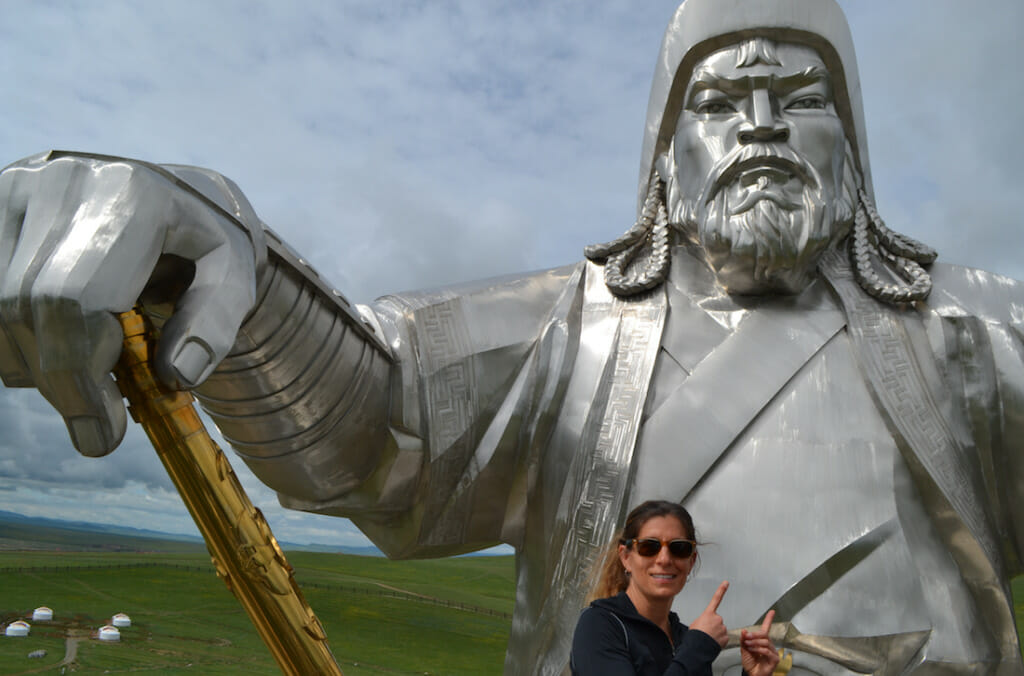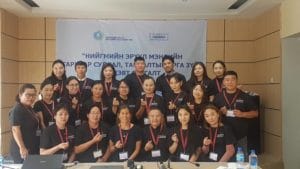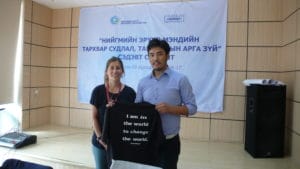In the land of Genghis Khan: Gatto Takes Health Training to Mongolia

In its legendary past, the greatest causes of death in Mongolia were the swords and spears of the armies of the Ming Dynasty.
Today it’s too much smoking and drinking (among other factors).
To help this country of some 3 million confront important health issues affecting its population, SCGH’s Nicole Gatto traveled this summer to that sprawling nation—once the largest contiguous land empire in human history—and presented training in epidemiology to a large group of public healthcare professionals in Ulaanbaatar, the country’s capital.
“I have wanted to go to Mongolia for over twenty years,” Gatto said, “so this made the opportunity that much more special. Indeed, this proved to be a once-in-a-lifetime experience!”
As a Fulbright Specialist, Gatto was invited by Mongolia’s National Center for Public Health (NCPH). The NCPH decided that Gatto—who is an associate professor of public health and directs the university’s PhD in Health Promotion Sciences Program—was an ideal match for their training needs in light of her expertise, knowledge, and skills in epidemiology.
Gatto, whose own research looks at environmental, occupational, behavioral and genetic risk factors for neurological and cardiovascular diseases, taught a two-week intensive course on epidemiologic methods and applications to 22 trainees from six of the country’s 21 provinces.
“I modeled the course after prescribed material from the CDC and WHO,” she explained, “as well as drawing on my own experience teaching epidemiology.”
Public health, as any SCGH professor like Gatto will tell you, does not use a one-size-fits-all approach. Gatto said that she was provided with recent reports on health indicators in Mongolia that helped her tailor her training to address the population’s top needs.
What these reports showed was that current leading health concerns include high rates of cardiovascular disease, high prevalence of smoking (one out of two men smoke cigarettes), heavy alcohol consumption, and incident liver cancer (inadequate sterilization of shared glass syringes prior to the 1990s led to the development of hepatitis).

At the end of the course, Gatto and her NCPH colleagues awarded students with certificates of completion—and a CGU shirt featuring an empowering message taken from American poet Muriel Rukeyser: “I am in the world to change the world.”
“There were a lot of ‘oohs’ and “ahhs’ when the message on the shirt was translated for them,” she said. “They just loved the shirts—more than I expected they would!”

Nothing better illustrates SCGH’s (and CGU’s) global focus than Gatto’s trip, which gave her a chance to lay the groundwork for future collaborations between the NCPH and SCGH.
Gatto also squeezed in some sightseeing as well—including pilgrimages to the Gobi Desert and Hustain National Park (home to the once-extinct wild Takhi horses) and a visit to the massive statue of Genghis Khan that stands on the outskirts of Ulaanbaatar—as well as networking with physicians and researchers and forging new relationships that she plans to maintain.
“As a faculty member of the School of Community and Global Health, I see my Fulbright as an opportunity to build our international collaborations,” she said. “One of the things that I hope will grow out of my trip is that we will be able to offer greater research and practice opportunities for our students in the realm of global health in Mongolia and many other places.”
